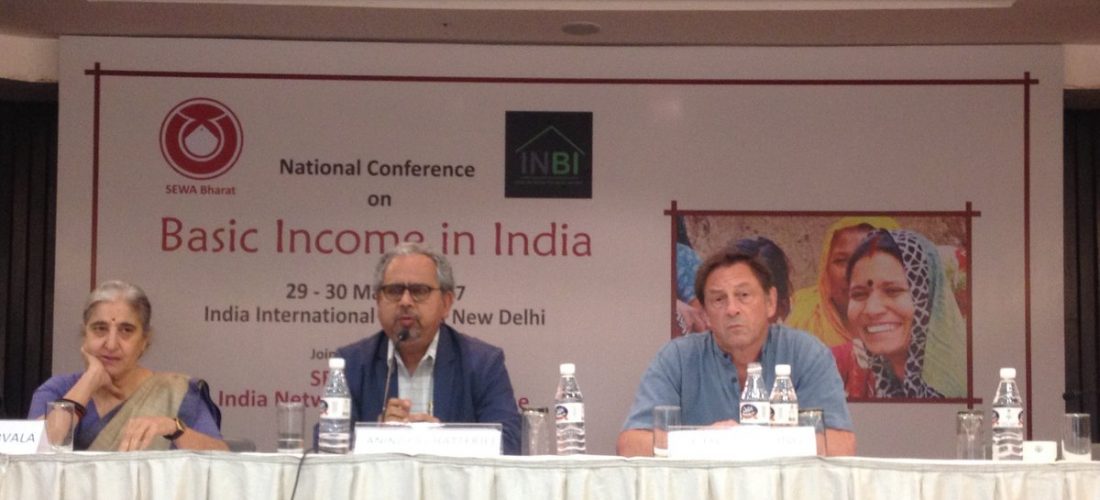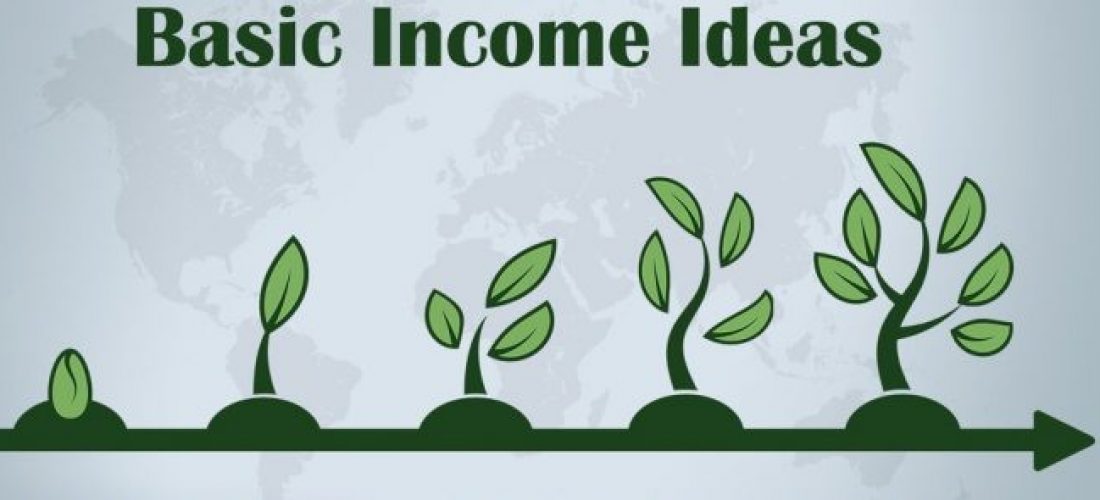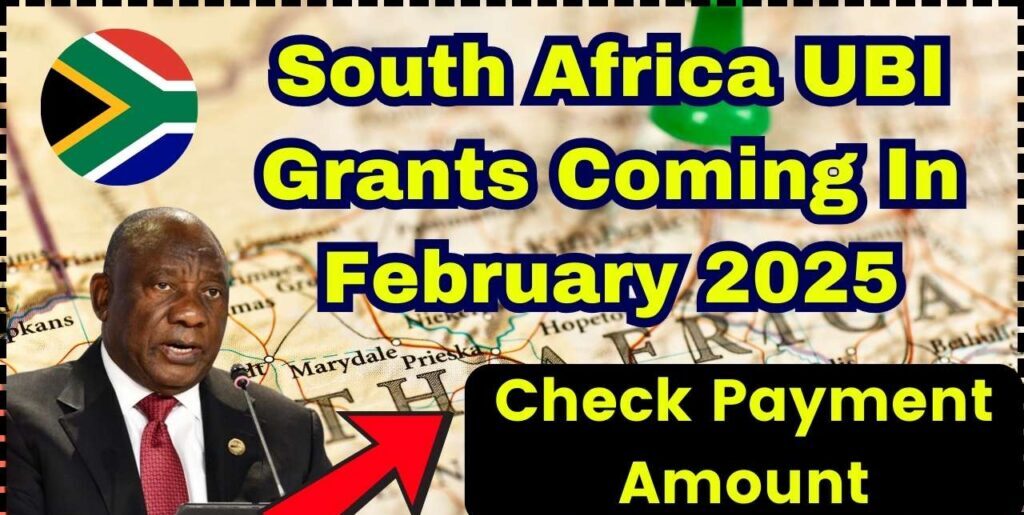L’India, un terreno fertile per il reddito di base. Un resoconto a cura di Guy Standing su un progetto pilota in India promosso dall’Associazione del lavoro autonomo delle donne (SEWA). Tale sperimentazione è stata realizzata in alcuni villaggi del Madhya Pradesh e successivamente in un quartiere povero di Delhi. Questo progetto, in particolare a Delhi, si è “scontrato” con le forme di sovvenzione alimentare e dei politici che le sostengono tanto che alcuni hanno detto che con il reddito di base si sarebbe portato via il cibo alle persone. A questo la maggiornaza delle persone hanno risposto che volevano ricevere un reddito piuttosto che qualche razione di cibo tanto che si è dato vita ad un secondo progetto pilota. Il Testo è in inglese.
India might seem an infertile ground for basic income. For decades, social policy has been about the bureaucratic raj, through which subsidised items have been supposedly supplied directly to ‘the poor’, mainly through ration shops, and where subsidies in general have become deeply ingrained in the society, accounting for over 5% of GDP. However, within the past two years an extraordinary change has occurred. Suddenly, the whole of the political establishment is talking about the desirability or otherwise of “cash transfers” instead of subsidies.
The timing of this new political prominence is fortuitous, since we had been planning a pilot cash transfer scheme since 2008, effectively a basic income pilot, albeit called a ‘universal, unconditional, individual cash transfer’. It had its origins in a seminar in Ahmedabad at the headquarters of the Self-Employed Women’s Association (SEWA) of India, where I laid out the principles of a basic income and reviewed the arguments for universalism against selectivity and targeting, and unconditionality against conditionality. Initially, there was some resistance to the idea that each man and each woman should receive the cash transfer independently. SEWA leaders were inclined to push for it to be paid to women only. To their credit, they eventually agreed that it should be paid to men and women independently, with the children’s cash being given to the mother or principal child-carer. Initially too, some argued for conditionality, but in a subsequent meeting representatives from local SEWA branches came out vehemently against conditionality. This was wonderful.
It took a year to raise funds, during which time a team of researchers and SEWA leaders was formed to plan the work. It was decided to operationalise the pilot in villages in Madhya Pradesh. But as we were planning, another opportunity came up to operate a second smaller pilot in a district of Delhi. This was instigated and supported by the Delhi Government, and the design reflected that. The Delhi pilot involved giving households a ‘choice’ between continuing with the existing PDS ration scheme, based on what are called the BPL (Below Poverty Line) cards that the poor are supposed to possess, and taking a monthly cash transfer instead. Many opted for the cash.
Shortly after this small pilot was launched, local opposition was mobilised, with a street campaign based on a claim that we wished to take away food and other essentials from the poor, currently provided to some people through the BPL cards. This misrepresentation led to riots directed at our team and pressure being put on those residents who had opted to take the basic income cash to revert to the rations. The ration shop owners were involved in this, although the action was led by a so-called Right to Food group.
As of July 2011, the Delhi pilot has been maintained, thanks in part to behind-the-scenes support of the local government and to the courage of local SEWA members. There is even evidence that more residents are wishing to shift to the basic income. We are in the midst of the second round of a monitoring-and-evaluation survey of the impact of the basic transfers. And there has been a request from the Delhi Chief Minister to conduct a second pilot in another area.
Meanwhile, the pace of political debate has been rapid. There has been a press furore, with prominent critics, such as Jean Dreze, claiming those pushing for cash transfers are wishing to dismantle the social state. I have responded to that in several newspaper articles and interviews, and in mid-July addressed the National Advisory Committee responsible for advising the Congress Party leadership, and thus the Government, on social protection policy. I have also given several presentations to UN organisations, including a long seminar that was teleconferenced in seven cities of India.
Meanwhile, the bigger pilot in Madhya Pradesh has moved ahead. We have been doing everything possible to maintain a low profile, which is one reason for my reluctance to present a description to BIEN members. Some of those who oppose cash transfers refuse to accept the legitimacy of pilot tests, and want to disrupt them.
Anyhow, although we certainly do not want any publicity about where the pilot is being conducted, the essence of the methodology and objectives are worth noting, partly because they might be relevant for pilots in other countries.
First, we decided to conduct a variant of a randomised control trial (RCT), in which all residents in 8 villages were to be provided with the basic cash transfer while all residents in 12 similar villages were not. Note that the full randomista model would provide the “treatment” (i.e., cash transfer) to a sample of households selected at random from within each village, to be compared with similar households not provided with the “treatment”. In the case of cash transfers that would be fraught with practical and moral drawbacks. So, we opted to provide the cash transfer to every individual in 8 villages and to none in the 12 ‘control’ villages.
Partly for pragmatic reasons, or funding constraints, and partly because the amount represented about 40% of bare subsistence, the pilot opted to provide each adult with 200 Rupees a month and each child under the age of 14 100 Rupees a month. Again because of funding constraints, it was decided to run the pilot for 12 months, although we had initially planned to do so for 24 months.
In accordance with a long-advocated theoretical position, we designed the experiment with one innovative feature. My perspective – shared by many within BIEN – is that a basic income would work better if combined with existence of ‘basic Voice’, i.e, a collective body able to represent the interests of the vulnerable. After all, particularly in low-income areas, a person with cash is vulnerable to losing it to more powerful individuals or groups unless there is a body able to represent and defend their entitlements.
With this in mind, it was decided to design the RCT experiment so as to compare the outcomes in places where there was no Voice body with those where there was such a body. Fortunately, we had a good way of doing this. For SEWA is operational and embedded in some of the villages and not others. So, from a sampling frame of all ‘SEWA villages’ and a sampling frame of all ‘non-SEWA’ villages in the district selected, we drew a sample of four SEWA and four non-SEWA villages in which the basic cash transfer would be paid.
Once the design principles had been worked out, the first practical phase was the drawing up of a full listing of all households in the 20 villages, not an easy or speedy process. That done, we conducted a comprehensive baseline survey of all households, and launched the cash transfer in the following month. But while that was going on, one further obstacle had to be overcome. It was desirable to control for ‘financial inclusion’, by universalising the way by which individuals received the cash transfer and by ensuring everybody had a bank account. This is a major issue in India today. The majority of the population are ‘unbanked’.
Rolling out bank accounts has been ongoing, with a record of when they were opened being kept for all individuals. For the first two months, the cash transfers were made by direct transfer, with teams from the project going to each village on a designated day. The process has been time-consuming but fortunately without incident. We hope to switch to paying through bank accounts shortly.
While a baseline household and individual survey was conducted, a Community Survey was also conducted to obtain macro-level data. Both the baseline and community surveys will be repeated, with modifications to suit the new period, six months after the start of the pilot, defined as the time of the first cash transfer. These will be called the midline surveys. Then, six months after that the endline surveys will be conducted.
Before the pilot was launched, we drew up a list of hypotheses associated with basic income or cash transfers, all of which are familiar to members of BIEN. We will be testing each of those, and hope to produce a public report and a series of technical papers over the next 18 months.
During that time, we expect the public and political debates in India to evolve dramatically. It is unlikely that the project team will stay out of those debates, even if it wished to do so. The Government has set up an official committee to review basic subsidies and two Food Security Bills are currently the focus of political attention. Numerous economists and other social scientists have taken up positions for or against cash transfers, and no day goes by without at least one newspaper article adding to the debate.
All that can be wished at this stage is that reason will triumph over emotion, and that dispassionate analysis can lead to better social policy. The importance cannot be over-stated. After all, there are more people in India – over 300 million – who are in absolute poverty than in any other country of the world. If a basic income could be part of the way to cut that number drastically, that would be a wonderful contribution. But we must keep our feet on the ground as we grind out the difficult fieldwork and analysis before us.







